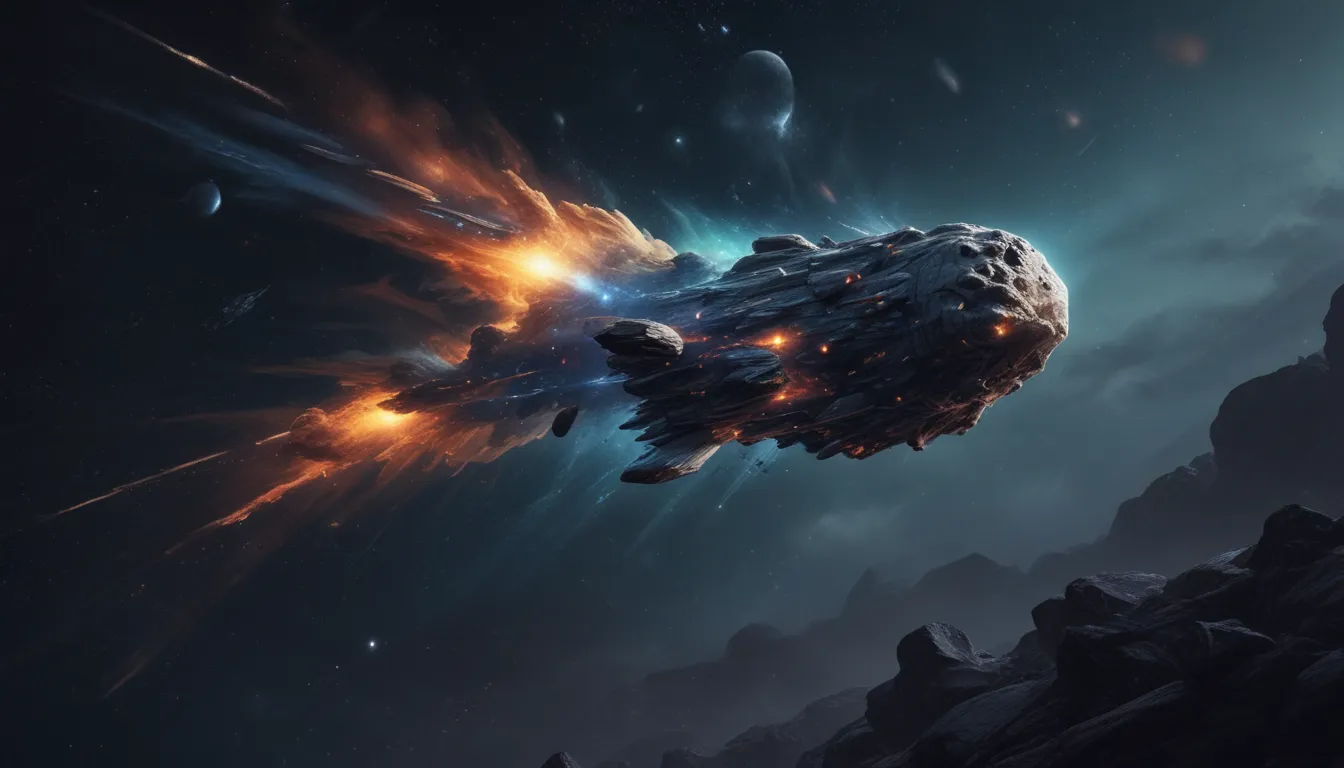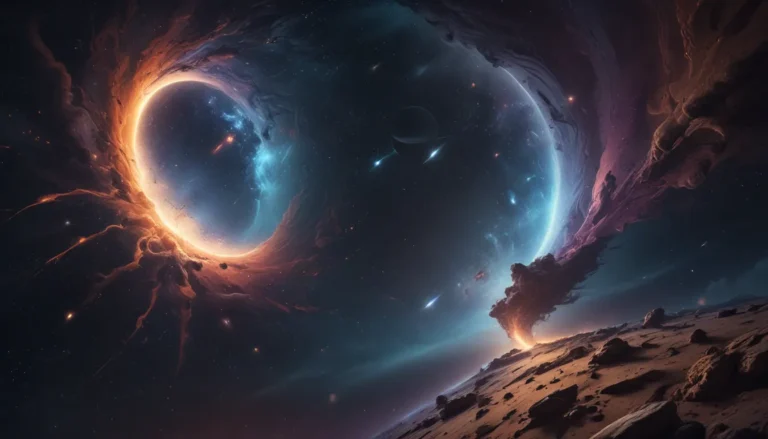The pictures we use in our articles might not show exactly what the words say. We choose these pictures to make you interested in reading more. The pictures work together with the words but don’t take their place. The words still tell you the important facts.
Are you intrigued by the cosmic wonders that dance across the night sky? Comets, those enigmatic celestial bodies, hold a wealth of secrets waiting to be uncovered. From their origins in the Kuiper Belt and Oort Cloud to their captivating compositions of frozen gases, rocks, and dust, comets are a captivating subject of study that continues to mesmerize astronomers and space enthusiasts alike.
Unveiling the Mysteries of Comets
NASA calls Comets Dirty Snowballs
According to NASA, comets are aptly described as cosmic snowballs. These intriguing objects are essentially made up of frozen gases, rocks, and dust, akin to a small town in size. As comets journey towards the sun and heat up, they emit dust and gas, creating a mesmerizing tail that stretches for millions of kilometers. This phenomenon has earned comets the endearing nickname of "dirty snowballs."
Short Period Comets Come From the Kuiper Belt
Short period comets, with orbits of 200 years or less, hail from the Kuiper Belt. Among these celestial wanderers, the famous Halley's Comet takes center stage, boasting an orbit of 76 years. The Kuiper Belt serves as a bustling hub for these short period comets, offering a glimpse into their fascinating origins and journeys through our solar system.
Long Period Comets Come From the Oort Cloud
In contrast, the enigmatic long period comets trace their origins back to the distant Oort Cloud. With orbits exceeding 200 years, these elusive visitors often make rare appearances, leaving astronomers intrigued by their mysterious paths through the cosmos. While short period comets are relatively predictable, long period comets remain shrouded in captivating unpredictability.
Comets Have an Atmosphere
A comet comprises three distinct components: the nucleus, the coma, and the tail. The nucleus serves as the core, housing a medley of frozen gases, rocks, and dust. As the sun's warmth envelops the nucleus, it generates an atmosphere known as a coma. The comet's tail, a mesmerizing trail of dust and gas, trails behind as it orbits, creating a spectacular spectacle in the night sky.
Comets Are Made up of Astronomical Leftovers
Delving into the depths of history, comets emerge as remnants from the genesis of our solar system over 4.6 billion years ago. Cloaked in ice and composed of the same fundamental elements as our planetary system, comets hold valuable clues about the ancient origins of our cosmic neighborhood. Scientists continue to unravel the mysteries hidden within these celestial remnants.
Comets Probably Can’t Support Life
While the potential for life on comets remains uncertain, these cosmic travelers may have played a pivotal role in seeding life elsewhere in the universe. Speculations abound regarding the role of comets in delivering water and essential elements to Earth during ancient collisions, shaping the course of evolution on our planet.
Unearthing the Marvels of Comet Exploration
Rosetta Comet Probe Was First to Orbit a Comet
Bridging the gap between scientific curiosity and cosmic exploration, the Rosetta comet probe embarked on a groundbreaking journey in 2014. Launched by the European Space Agency, Rosetta became the first spacecraft to orbit a comet, delving into the depths of Comet 67P and unraveling the mysteries shrouding these celestial nomads.
The Philae Lander Was First to Touchdown on a Comet
Joining the ranks of ambitious space missions, the Philae Lander marked a historic milestone as it became the first spacecraft to touch down on a comet. Venturing alongside the Rosetta comet probe, Philae's daring touchdown on Comet 67P opened new frontiers in comet exploration, offering unprecedented insights into these enigmatic cosmic entities.
The Surface of Comets May Be Free of Ice
Contrary to popular perception, recent revelations from the Rosetta probe have unveiled surprising insights into comet composition. Strikingly, images of Comet 67P showcased a lack of surface ice, challenging conventional notions of comet structure. Despite the absence of surface ice, the enigmatic nature of comets continues to intrigue and captivate astronomers worldwide.
Delving into the Enchanting Realm of Comet Anecdotes
Comet C-6 Can Fill Your Swimming Pool
Unveiling the astounding capabilities of comets, Comet C-6 stands out for its remarkable ability to expel water in vast quantities. Researchers discovered that this cosmic wanderer can discharge enough water in 100 days to fill an Olympic-sized swimming pool, shedding light on the potential implications for understanding the origins of life on Earth.
The Perseid Meteor Shower Is a Result of a Comet
Amidst the celestial spectacle of the Perseid Meteor Shower lies a captivating connection to comets. Occurring annually in August, this mesmerizing phenomenon is attributed to the passage of Earth through the debris trail of the Swift-Tuttle comet, weaving a tapestry of shooting stars across the night sky. The harmony of cosmic dance continues to amaze and inspire stargazers worldwide.
Twain’s Life and Death was Marked by Halley’s Comet
Embarking on a journey entwined with celestial significance, Mark Twain's life and legacy intersected with the majestic passage of Halley's Comet. Born shortly after the comet's visit in 1835, Twain prophetically predicted his departure coinciding with the comet's return in 1910, adding a mystical touch to his timeless literary contributions.
Reflecting on the Legacy of Comets Through History
The Epic of Gilgamesh Described Ruin Thanks to a Comet
Traversing ancient tales and myths, the Epic of Gilgamesh narrates the celestial spectacle of a comet blazing across the skies. This primordial account intertwines the comet's appearance with catastrophic events on Earth, instilling a sense of wonder and awe in the hearts of ancient civilizations.
Nero Feared the Omen of a Comet
In the annals of history, the ominous presence of comets evoked fear and superstition among rulers and civilizations. Nero, the infamous Roman emperor, succumbed to dread upon witnessing a comet, viewing it as a harbinger of ill fate. His misguided actions to avert misfortune reflect the enduring impact of comets on the psyche of humanity.
Halley’s Comet Has Been Spotted Throughout History
Tracing a luminous path through the annals of time, Halley's Comet emerges as a recurring celestial visitor captured in historical records. With documented sightings dating back to 240 BC, this iconic comet has enthralled diverse cultures, from ancient Chinese observers to medieval Europeans, leaving an indelible mark on the collective consciousness of humanity.
Embracing Comets in Popular Culture and Art
Game of Thrones Used Comet as a Sign
Infusing the tapestry of popular culture with cosmic symbolism, the iconic television series Game of Thrones aptly portrayed a comet as a sign of change and upheaval. Reflecting on the ephemeral nature of celestial phenomena, George R.R. Martin's narrative weaves a tale of intrigue and mystery, resonating with audiences captivated by the allure of comets.
Journeying Through the Cosmic Diversity of Comets
There are 5,253 Known Comets
Within the expansive realm of our solar system, over 5,253 comets have been cataloged, offering a glimpse into the rich diversity of cosmic wanderers. Yet, the true expanse of comet populations extends far beyond our current knowledge, with the hypothesized existence of one trillion comets residing within the enigmatic Oort Cloud, awaiting discovery and exploration.
Deep Impact Created a Crater on a Comet
Embarking on a mission of scientific inquiry, the Deep Impact endeavor led by NASA left a profound impact on our understanding of comets. By creating a crater on the surface of comet Tempel 1, scientists unveiled key insights into comet composition and structure, shedding light on the mysterious nature of these celestial travelers.
Embracing the Enchantment of Comets: A Summary
In conclusion, the realm of comets beckons us to embark on a cosmic odyssey filled with wonder, discovery, and awe. From their origins in distant celestial realms to their captivating compositions and historical significance, comets continue to mesmerize and inspire us with their timeless beauty. As we gaze upon the celestial canvas adorned with these glittering cosmic travelers, let us embrace the enchantment of comets and delve into the mysteries that await us in the boundless expanse of the universe.






